Impact report guide: How to demonstrate impact effectively

While social good organizations have a variety of causes and goals they aim to achieve, every nonprofit organization and public sector agency wants to drive impact. Whether you fight to reduce homelessness or provide services for expecting mothers, your core objective is to generate a lasting, positive impact in your community.
But how do you measure your organization’s impact and demonstrate it to funders, donors, and other stakeholders? In this guide, we’ll explore the basics of impact reporting so you can better understand and prove the success of your programs.
Ready to jump in and start proving your impact to funders? Download our free eBook to learn how to craft an impact report that focuses on what funders want to see.
What is an impact report?
A nonprofit impact report is a document that details the outcomes and tangible impact of a certain program, initiative, or service. Impact reports are used by nonprofits, public sector agencies, and even for-profit companies that want to demonstrate the social impact of their corporate philanthropy efforts.
Compared to an annual report, impact reports tend to be more focused on certain initiatives and may have different intended audiences. Instead of discussing the entirety of an organization’s performance over a year, impact reports typically zero in on one program and are often geared more toward funders.
Why is impact reporting important?
Regularly creating and sharing impact reports is essential for your organization’s long-term growth. This is because impact reporting helps you:
- Understand your programs’ effect on participants: Analyzing and visualizing program data allows you to see exactly how a program affected participants and whether or not you achieved your goals. Soliciting feedback and testimonials for the impact report also helps you get a more thorough understanding of participants’ experiences.
- Prove outcomes to funders and other stakeholders: Your organization relies on grants to fund its work, and those grants likely have reporting requirements. Funders need to see that you put their funds to good use and understand how you did so. With impact reports, you can clearly and effectively report on your program outcomes.
- Build trust with your partners: Whether you have corporate partners or work with other organizations, demonstrating your impact effectively shows your partners that your work is worth supporting. This helps you improve relationships and retain important partnerships over time.
- Find opportunities for improvement: Creating an impact report involves analyzing your biggest successes and challenges, which helps your organization identify actionable ways to improve. You can apply this insight to future iterations of the same program along with the development of new programs.
Impact reporting doesn’t just help you with your current programs and grants, either. Once you have an impact report that demonstrates your organization’s ability to deliver quality services, you can use it to build new relationships and secure more essential funding in the future.
What goes into impact reporting?
Impact reporting starts with data. This means you need to establish processes for choosing, collecting, and analyzing the right data points for your organization before you can even start planning an impact report.
On the whole, impact reporting requires three key parts:
Defining KPIs, outputs, and outcomes
Any time you start a new program or begin analyzing an existing one, your organization must first choose which data to track. Determine several key performance indicators (KPIs), which are quantitative data points that will clearly show whether your program is successful at achieving its goals. For example, if your program aims to help young women find jobs, you might choose KPIs like the percentage of participants who found a job within six months of joining the program.
These KPIs should be in the form of both outputs and outcomes, which are defined as:
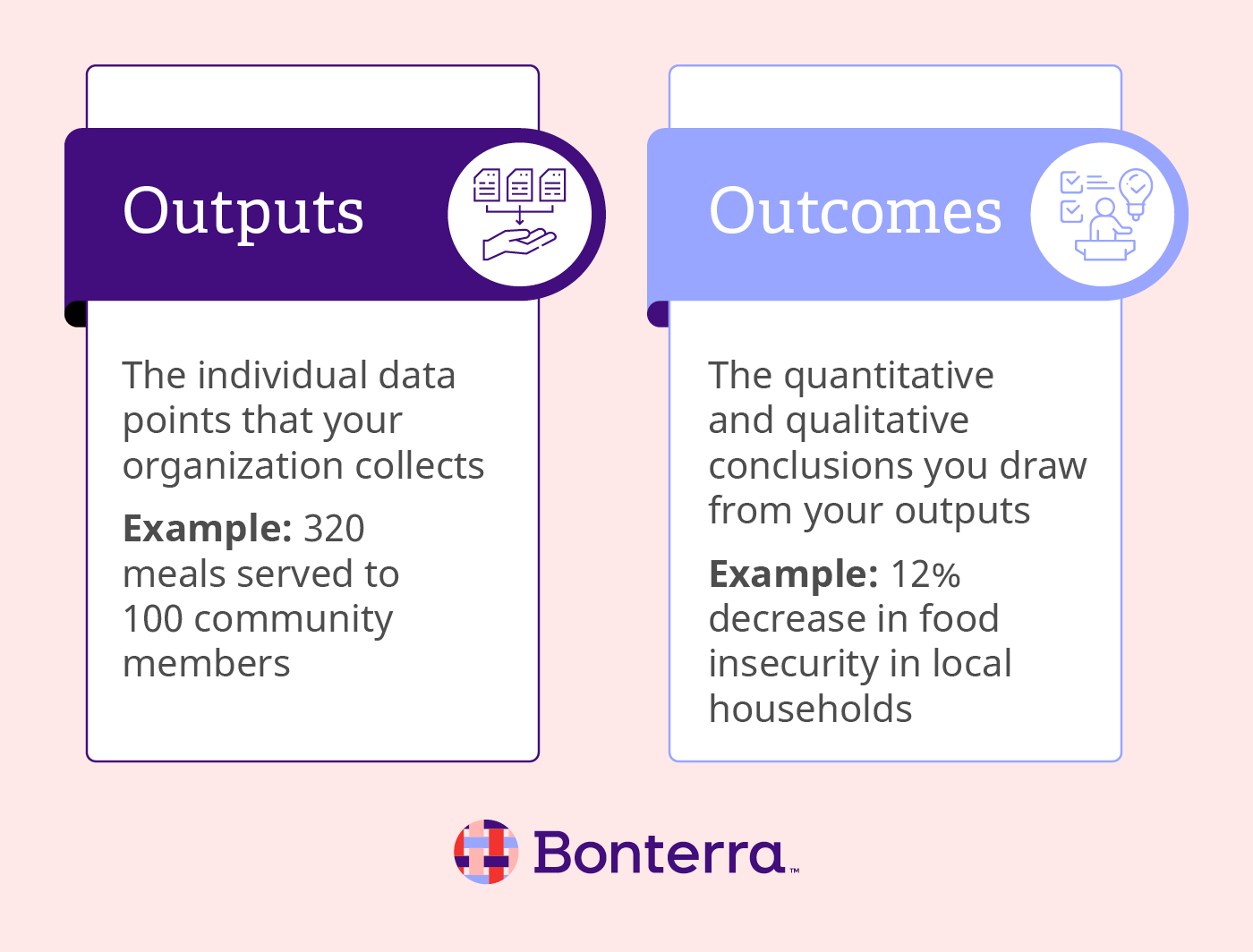
- Outputs: The individual data points you record in your database about your programs, such as the number of participants or the number of meals served to participants.
- Outcomes: The conclusions you draw from your outputs (both quantitative and qualitative), such as decreasing local food insecurity by 12%.
Defining all of your intended outputs and outcomes now will not only guide your team through data collection but will also make drafting your impact report easier.
Data collection and analysis
Next, you’ll move on to the process of data collection as you run your program or initiative. Case managers, program administrators, and other internal stakeholders should all be informed of which data to track and how to collect it. This will help you keep your data as consistent and complete as possible.
For instance, define what systems case workers should use to input data, how often they should do so, and which data can be collected automatically instead of manually recorded.
Quality case management software will streamline this process and make reporting easier down the line. With robust software tools, your organization can track all essential program data in the same place and automatically generate reports to analyze that data.
Reporting
Once you have all the information you need for a specific program or time period, you can start reporting. This process involves organizing your data, drafting an impact report, and sharing it with your stakeholders (all of which we’ll discuss in more detail below).
Basic components of an impact report
While the content of an impact report can vary widely depending on your organization’s goals and audience, the most successful nonprofit impact reports include the following baseline components:
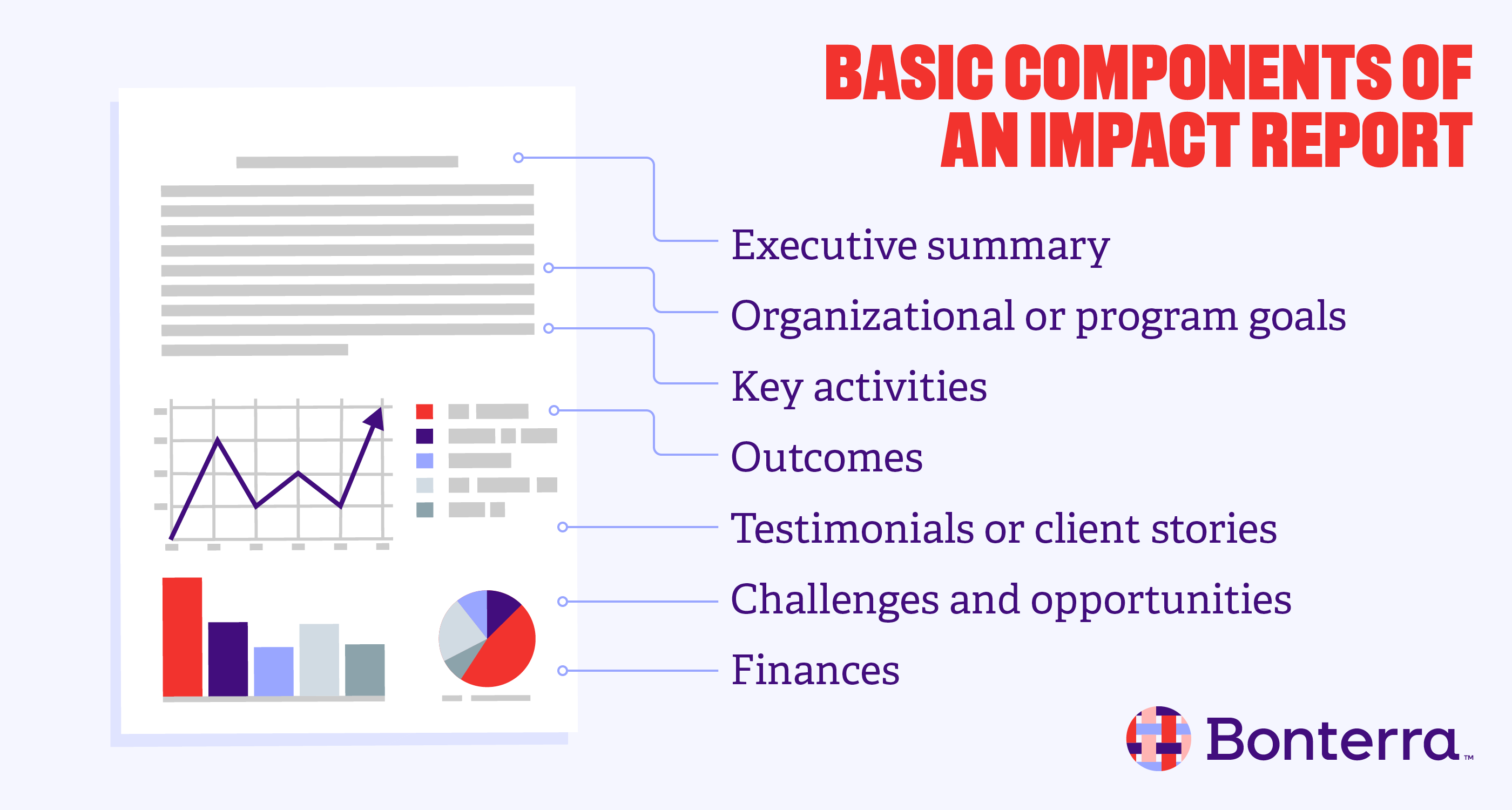
- Executive summary: A one-page summary or letter that describes the program or initiative you’re reporting on, the purpose of the impact report, and its most notable findings
- Organizational or program goals: A quick overview of your organization’s purpose and the program’s specific, measurable goals
- Key activities: The components of your program, your organization’s activities, and any other relevant actions taken
- Outcomes: The quantitative data that proves the impact of your program, with key metrics often highlighted alongside data visualizations like charts, graphs, and tables
- Testimonials and stories: Quotes, photos, and stories of your participants’ experiences in your program that demonstrate its impact
- Challenges and opportunities: A discussion of any challenges you faced that may have affected your results along with ideas for future improvement
- Finances: A transparent breakdown of your program costs and funding sources
In addition to these components, some impact reports include extensive visuals, information about methodology, and even interactive elements. Consider using a basic impact report template as a starting point, then evaluating whether you need any additional elements. Try to keep your final impact report as concise as possible so as not to overwhelm readers.
How to create a nonprofit impact report.
Now that you understand what goes into an effective impact report, let’s walk through the steps you should take to create your own.
Reflect on your audience and goals.
First, clarify who you’re creating this impact report for. Depending on your goals, your audience might be:
- Current funders.
- Donors and other supporters.
- Potential funders for future programs.
- The general public.
Your primary audience and goals will determine how you structure the report and which elements to focus on. For example, an impact report aimed at securing future funding might focus on proving overall organizational progress, while a report used to fulfill grant requirements may be more data-heavy and emphasize the financials.
Compile and analyze the data
Gather relevant program data and use data analysis tools to identify trends, patterns, and conclusions. To simplify this process, leverage case management software that tracks inputs and outputs and easily translates them into clear outcomes you can report on.
For instance, Bonterra Apricot comes with comprehensive reporting, data analysis, and visualization tools that help you quickly dive deeper into your data. Customizable forms ensure that your case workers collect the right data in the first place, and advanced features enable you to compare the impact of different programs and automatically deliver reports to key stakeholders.
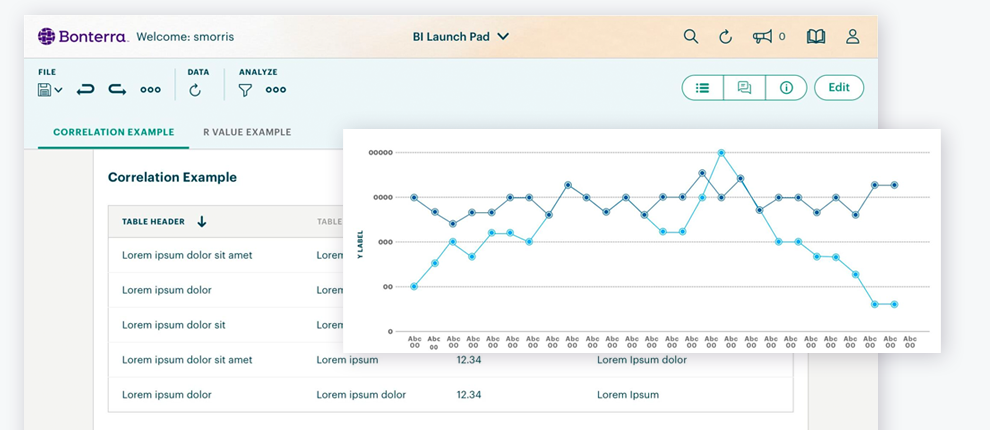
Refer back to the KPIs and desired outcomes you outlined earlier to decide which data to include in your impact report. Remember to include both outputs and outcomes to provide a holistic view of your program’s impact.
Seek out testimonials.
Next, see if you already have testimonials from participants on hand that could be a valuable addition to your report. Review the answers they provided on feedback surveys and responses to follow-up communications, looking for any especially descriptive, positive statements.
If you don’t have testimonials or you identify participants you’d like to interview further, ask a few of them for more information about their experience. You might conduct an in-person interview or just ask them to send comments via email. Either way, make sure you ask each participant for permission to include their testimonial, name, and photo (if applicable) in your impact report.
Choose a format and create visuals.
Once you have most of your report’s content ready, decide how to format it and what visuals you want to include (such as photos and data visualizations). You can choose from a number of common impact report formats, such as a:
- Basic PDF.
- Downloadable eBook.
- Interactive page on your organization’s website.
- Physical copy.
- Video.
Each format comes with its own advantages and disadvantages to consider. PDFs are the most common choice because they’re easy to distribute, save, and read, but some nonprofits may not find them interactive enough. A website page or video, on the other hand, provides more room for creativity but requires more time and effort.
Your audience should inform your formatting decisions along with considerations like your budget, skills, and time constraints. For instance, a grantmaking organization may want to see your impact report in a PDF format, while the general public might find a website page more accessible and appealing. Based on the format you choose, determine how many visuals you need and design them to fit naturally within the report.
Draft the impact report.
With all the pieces in place, you’re ready to draft your impact report by writing the copy. Remember to write for your audience and think about what they will want to know most about your organization’s impact. Do they need to see all the financials? Will they want to view the data right away or read stories of participants’ success first? How much context do they need for certain metrics?
Focus on telling the story of your nonprofit’s impact in clear, compelling terms. Don’t assume that the data will speak for itself — be sure to expand on the meaning behind the numbers, translating data points into understandable, real-life impacts.
Publish and distribute your report.
After finalizing the content of your impact report, the final step is to publish it and send the report to its intended audience. If your audience is the general public, this might involve posting the impact report on your website and sharing it with your donor base via email. If it needs to go to funders, plan to send it directly to each of your points of contact for the organizations that granted you funds.
Compelling impact report examples
Impact reports take a variety of shapes and forms, so it helps to see a few examples before you start brainstorming ideas for your own report. That’s why we’ve compiled the following examples from Bonterra customers:
Employ Milwaukee
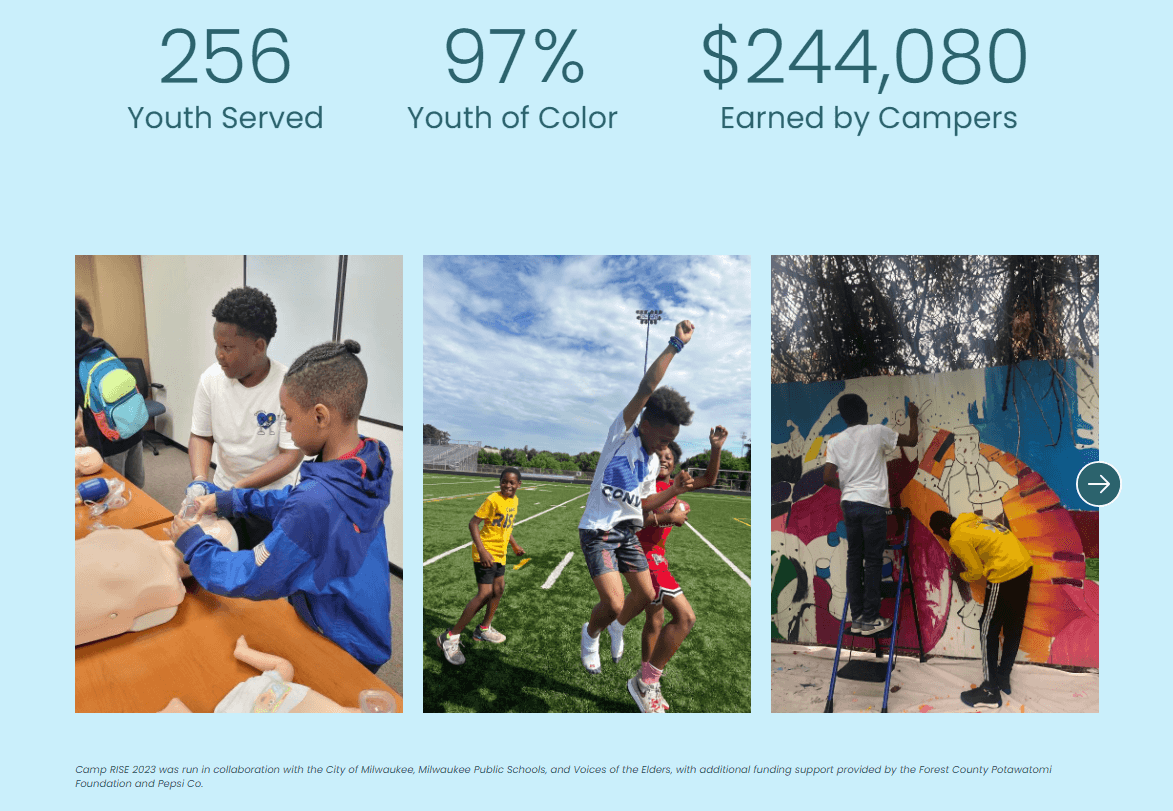
Employ Milwaukee is an organization that provides workforce development resources to youth and adults in Milwaukee, Wisconsin. To showcase its impact to the wider public, this organization formatted its impact report as a dynamic, interactive webpage. The report includes photos, standout metrics, and first-person testimonials along with descriptions of each of its programs.
Laurel House
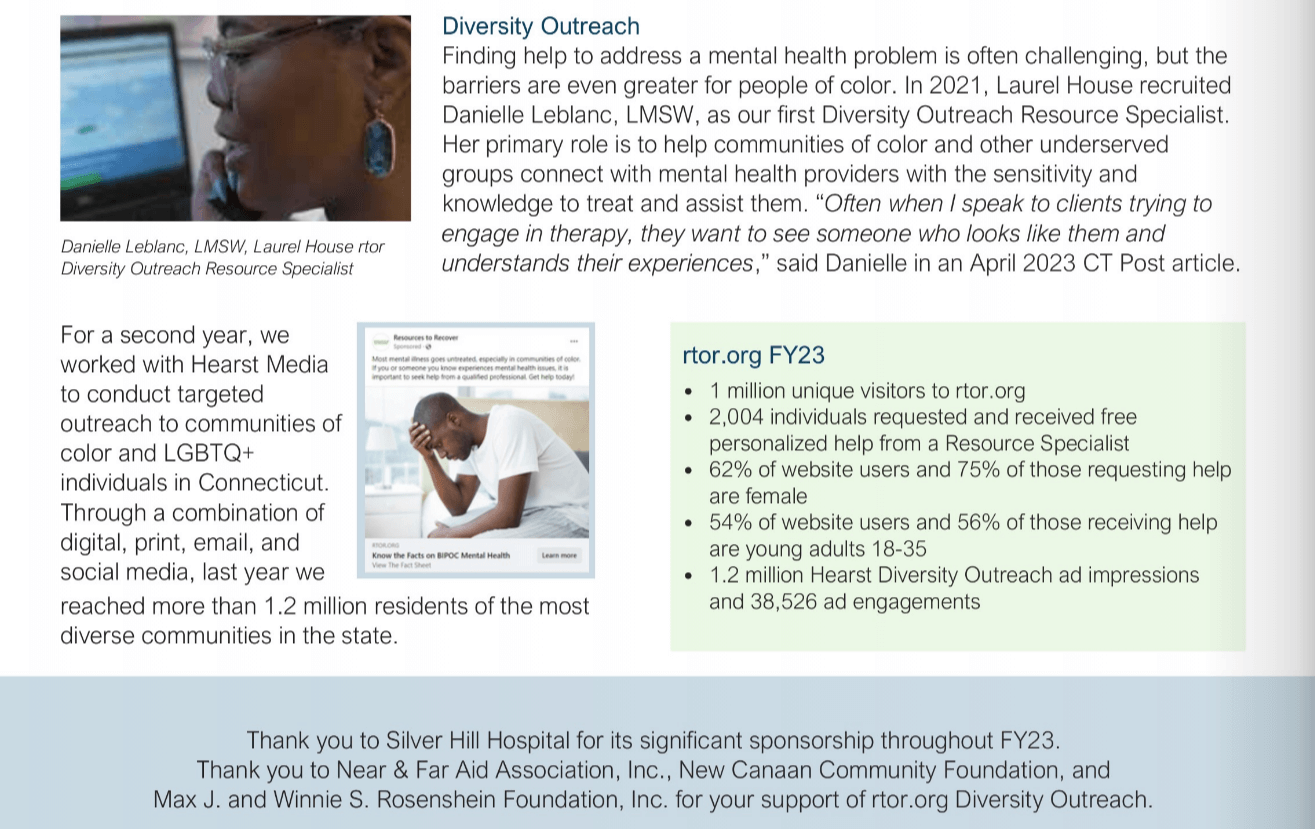
For a more detailed, text-heavy example, look at Laurel House’s impact report. This domestic violence prevention agency used Bonterra’s case management tools to track outputs like the number of visitors to its emergency shelter and the percentage of participants who were female. Laurel House chose to format its report as an eBook that any visitor to its website can explore.
Hutt St Centre
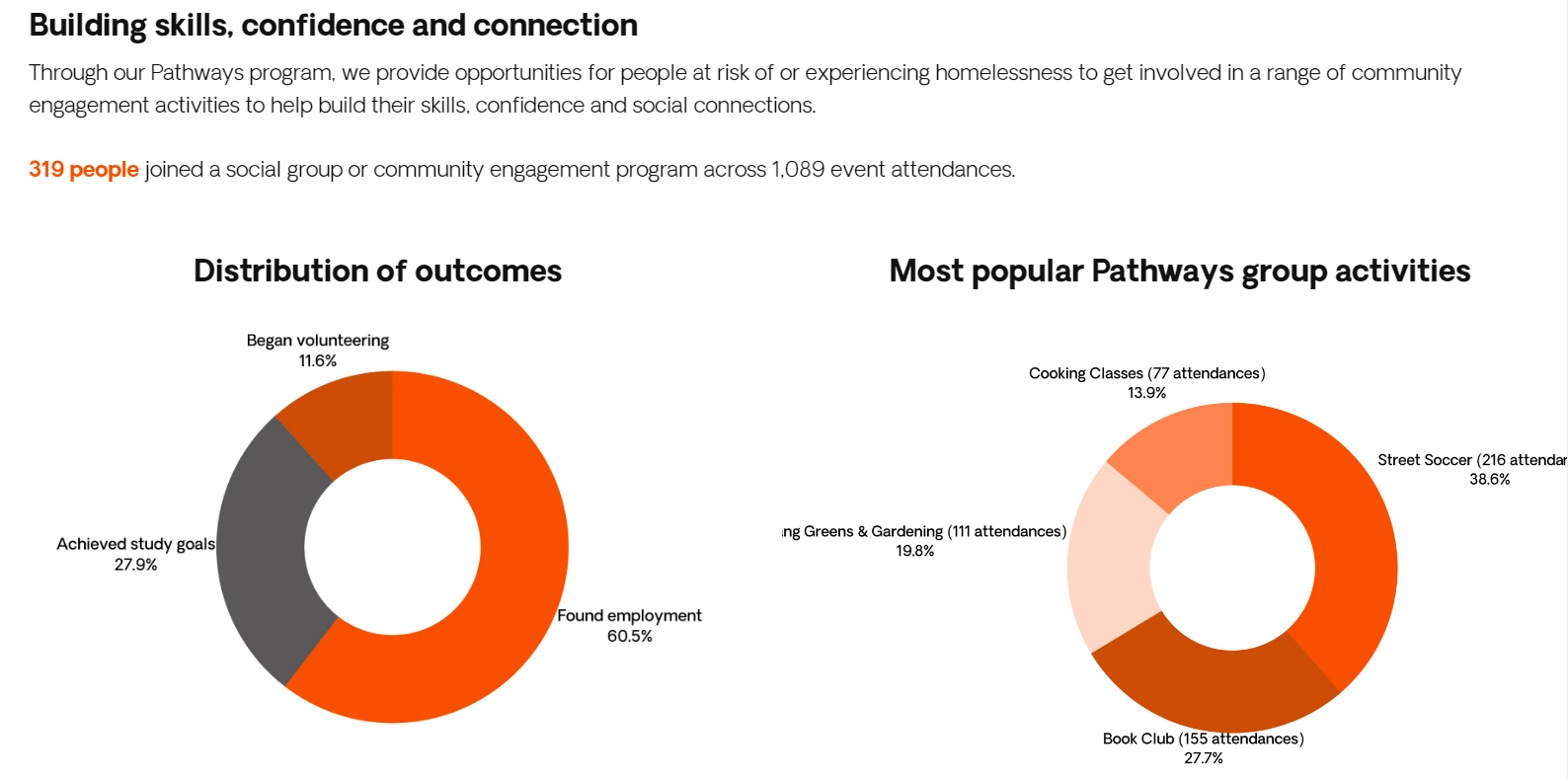
Hutt St Centre is an Australian nonprofit that provides resources and support to people experiencing homelessness. In its most recent impact report, the organization included a variety of data visualizations like the pie charts shown above. These graphics make it easy for readers to understand program outcomes and see which aspects of the program participants relied on most.
Streamline nonprofit impact reporting with Bonterra
Impact reporting is essential for social good organizations that rely on funding from grantmakers or the public, and a standout impact report can make a major difference for your nonprofit. With these best practices and top-rated software like Bonterra Case Management, you can easily collect, analyze, and report on all the data you need to prove your impact and continue making a difference.
Ready to improve your impact reporting with Bonterra Case Management?
Work with Bonterra



